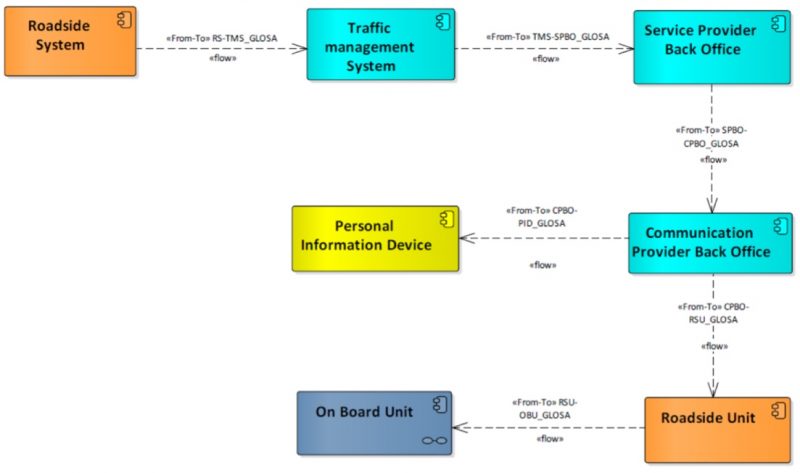Warning System for Pedestrian (WSP)
The objective of Warning System for Pedestrian is to improve safe and comfortable driving for vehicle drivers.
Taking into account various stakeholders’ views, a list of business model blueprints that address current or future challenges of urban areas, together with their operating and value-capture scenarios depicting the inner-workings of the business models, and the exchange of costs-benefits among stakeholders, have been created for the Warning System for Pedestrian service.
Detailed information about Warning System for Pedestrian architecture can be found here.

Within the C-MobILE project the Warning System for Pedestrian service is implemented in seven Deployment Sites: Barcelona, Bordeaux, Copenhagen, Newcastle, North Brabant, Thessaloniki, and Vigo.
In Barcelona the Warning System for VRUs service is based on cellular communication technology. This service is active at over 100 intersections around the city. Applus IDIADA is the service provider receiving location data from cyclists riding through a specific, dangerous intersection and informing drivers about their presence via an App.
In Bordeaux the Warning System for Pedestrian is implemented as a proof of concept service. In this experimentation, a pedestrian carries a miniaturized OBU that broadcasts its position through ITS-G5 communication technology. A driver on a vehicle equipped with an OBU receives an alert about the presence of such pedestrian crossing the road. The service provider for WSP is NeoGLS.
In Copenhagen the Warning System for Pedestrian service is based on cellular communication technology. The service is intended to warn drivers about the presence of pedestrians crossing a street. The presence of a pedestrian is registered by thermal cameras and sent to the Geo-Messaging server where it is published according to the appropriate standards to allow service providers and App developers providing such information to their users. The service is deployed only at one location as a proof of concept, but it is intended to cover the entire road network of the city.
The Newcastle City Council is implementing a proof of concept of the WSP service. This will provide in vehicle information about the presence of a pedestrian, and alerts pedestrians about the presence of a vehicle. The investigation is carried out at one pedestrian crossing in Newcastle. It is hoped that this will be adopted in the future as part of the cellular bundle.
In North Brabant the Warning System for VRUs service is based on cellular communication technology. A warning system for pedestrians is combined with blind spot detection for cyclists and pedestrians at a signalised intersection in the city of Eindhoven. A camera system by MACQ detects cyclists and pedestrians at this intersection. When these road users violate the red light a warning message is triggered.
In Thessaloniki the Warning system for Pedestrian service is implemented as proof of concept in a limited number of intersections. The service is provided by the Hellenic Institute of Transport (CERTH-HIT) through its own App (cmobile.imet.gr) which disseminates the information to the drivers. Information about signalised intersections are provided to CERTH-HIT from the local technical partner Traffic Technique (www.traffictech.gr) which is responsible for their operation.
In Vigo the Warning System for Pedestrian service is implemented as proof of concept using cellular communication technology. The service operates at a limited number of intersections and provides drivers using the local App with information about the presence of pedestrians detected by cameras.